Have you ever gone up to your attic and noticed a blanket of snow covering the floor or rafters? It may come as a surprise, but snow in the attic is not uncommon, and it can be a cause for concern. Understanding the reasons behind this phenomenon is crucial in preventing potential damage to your home and ensuring optimal indoor comfort. In this article, we’ll explore the possible causes of snow in the attic and provide solutions to tackle this issue.
Understanding Attic Insulation
Proper insulation in the attic is essential for maintaining a comfortable indoor environment and preventing snow accumulation. However, insufficient or damaged insulation can lead to heat loss, contributing to the formation of snow in the attic.
Common insulation problems that can lead to snow accumulation include inadequate thickness, damaged insulation, and poor installation. In particular, damaged insulation can allow heat to escape and create warm spots on the roof, which can melt snow and contribute to moisture buildup. As a result, it’s essential to ensure that your attic insulation is in good condition and installed correctly.
Insulation Materials
The most common types of insulation used in attics are fiberglass, cellulose, and spray foam. Fiberglass insulation is a popular choice due to its affordability and ease of installation. However, it can be prone to settling over time, reducing its effectiveness. Cellulose insulation, made from recycled paper and treated with fire retardants, is an eco-friendly option that provides better performance than fiberglass. Spray foam insulation offers superior insulation performance and air sealing, but it can be costly.
Insulation R-Value
The R-value of insulation measures its thermal resistance, with a higher R-value indicating better insulation performance. The recommended R-value for attic insulation varies depending on your location and climate. In colder regions, higher R-values are recommended to prevent heat loss and energy waste. In warmer regions, lower R-values are acceptable, but proper ventilation is crucial to prevent moisture buildup.
If you suspect that your attic insulation is inadequate or damaged, consider contacting a professional to perform an inspection. They can recommend the best course of action to improve your insulation and prevent snow accumulation in the attic.
Exploring Attic Ventilation
Adequate attic ventilation is crucial in preventing snow accumulation in the attic. Poor ventilation can cause condensation and moisture buildup, leading to the formation of snow on surfaces such as the underside of the roof.
Ventilation systems facilitate airflow in the attic, maintaining optimal temperature and moisture levels. During winters, having proper ventilation helps to prevent heat buildup, which can cause snow and ice to melt and refreeze, leading to ice dams.
Attics typically require one square foot of ventilation for every 150 square feet of attic floor space, with half of the vents placed on the roof’s lower half and the other half on the upper half.
Inadequate ventilation can also cause mold growth and contribute to wood rot, which can damage the structure of the attic. Therefore, it is essential to ensure that your attic has proper ventilation.
Addressing Attic Condensation
One of the leading causes of snow in your attic is excessive moisture levels, which can lead to condensation on surfaces in the attic, including the underside of the roof. This condensation can contribute to the formation of snow and potentially lead to long-term moisture exposure. If the problem persists, it can lead to the growth of mold and further damage to your attic and home.
To prevent condensation and snow accumulation, it’s important to regulate the humidity levels in your attic. Inspect your attic for any leaks or cracks that could allow moisture to seep in. Proper ventilation will also help regulate the temperature and air flow in the attic, reducing the risk of condensation and snow accumulation.
If you’re unsure about the humidity levels in your attic, consider investing in a humidity monitor. These monitors can be used to keep track of the moisture levels in your attic and alert you if they reach dangerous levels.
Tackling Attic Snow Melt
Attic snow melt occurs when heat from the living space below escapes through the roof, causing snow on the roof to melt and water to infiltrate the attic. This can lead to water damage, mold growth, and other issues. To prevent attic snow melt, it’s essential to address the underlying causes.
Causes of Attic Snow Melt
There are several potential causes of attic snow melt, including:
- Insufficient insulation in the attic
- Inadequate ventilation
- Air leaks in the attic
These issues can cause heat to escape through the roof and melt the snow, leading to water infiltration into the attic.
Preventing Attic Snow Melt
To prevent attic snow melt, it’s crucial to address the underlying causes. Here are some tips:
- Ensure proper insulation in the attic to prevent heat from escaping through the roof.
- Improve attic ventilation to regulate temperature and prevent moisture buildup.
- Seal air leaks in the attic to prevent warm air from escaping through the roof.
By taking these steps, you can help prevent attic snow melt and the potential problems it can cause.
Preventing Attic Ice Dams
If you live in an area with frequent snowfall, you may be familiar with the phenomenon of ice dams. These ridges of ice that form at the edge of your roof can trap snow, meltwater, and moisture, potentially leading to leaks and water damage in your attic.
Proper insulation and ventilation are key to preventing ice dams and keeping your attic dry. Here are some tips:
| Tip | Description |
|---|---|
| Insulate your attic | Make sure your attic is properly insulated to prevent heat from escaping and melting snow on your roof. Adding extra insulation can help. |
| Seal air leaks | Caulk or weatherstrip any gaps or cracks in your attic to prevent warm air from escaping and creating ice dams. |
| Install soffit vents | Soffit vents can help increase ventilation in your attic and prevent condensation and moisture buildup. |
| Upgrade your roof | If you’re due for a roof replacement, consider upgrading to a metal or other material that resists ice dams. |
Remember, it’s important to address ice dams promptly to prevent further damage. If you’re unsure how to deal with ice dams or if you suspect water damage in your attic, it’s best to consult with a professional.
Removing Snow Accumulation
If you’ve identified snow accumulation in your attic, it’s essential to remove it promptly to prevent further damage. Excess weight on the roof structure can compromise its integrity and damage the insulation, leading to heat loss and energy waste. Additionally, snow accumulation can increase the likelihood of leaks and water damage.
If you’re comfortable with DIY snow removal, take precautions to ensure your safety. Use a sturdy ladder, wear appropriate clothing, and avoid stepping on the roof to prevent falls. Use a plastic shovel to remove the snow, starting from the edges and working your way inward.
If you’re not comfortable with DIY snow removal, seek professional assistance. Professional snow removal services have the equipment and expertise necessary to remove snow safely and efficiently.
| Dos | Don’ts |
|---|---|
|
|
Expert Tips for Winterizing Your Attic
Winter can be harsh on your home, and your attic is no exception. By taking the time to winterize your attic, you can prevent snow-related issues and save money on your energy bills. Here are some expert tips to get your attic winter-ready:
1. Ensure Adequate Insulation
Proper insulation is key to keeping your attic warm and dry during the winter. Make sure your insulation is at the recommended R-value for your region, and check for any signs of insulation problems, such as gaps, settling, or damage.
| R-Value Recommendation | Region |
|---|---|
| R49 to R60 | North |
| R38 to R49 | Midwest |
| R30 to R38 | South |
| R49 to R60 | West |
Make sure to seal any air leaks around your attic, including around your chimney, vents, and plumbing stacks.
2. Improve Ventilation
Adequate ventilation is crucial for regulating temperature and humidity in your attic. Make sure your attic vents are not blocked by insulation and check for any signs of poor ventilation, such as moisture buildup or mildew.
Consider installing a ventilation system or increasing the number of vents in your attic for better airflow.
3. Seal Air Leaks
Air leaks can allow warm air to escape from your living space and create moisture problems in your attic. Use weather stripping and caulking to seal any air leaks around your attic and reduce heat loss.
4. Maintain Proper Humidity
Excessive humidity in your attic can lead to condensation and moisture problems, which can contribute to snow accumulation. Use a dehumidifier if necessary to maintain proper humidity levels in your attic.
5. Regularly Inspect and Maintain Your Attic
Regular inspections and maintenance can help prevent snow-related issues in your attic. Check for any signs of insulation problems, poor ventilation, or moisture buildup, and address them promptly.
By following these expert tips, you can winterize your attic and prevent snow-related issues before they become a big problem.
Signs of Attic Problems
It’s essential to be aware of common signs of attic problems to prevent snow accumulation and other issues. Here are some warning signs that your attic may have insulation or ventilation problems:
- Drafts or cold spots in the living spaces
- Uneven indoor temperature
- Visible moisture on the ceiling or walls
- Musty or unpleasant odors
- Water stains on the ceiling or walls
If you notice any of these signs, it’s crucial to identify and address the underlying issues promptly. Ignoring attic problems can lead to further damage, such as mold growth, structural damage, and health hazards. Regular attic inspections and maintenance can mitigate potential problems before they escalate.
FAQ: Why Is There Snow In My Attic?
Have questions about snow in your attic? We’ve got answers! Check out these frequently asked questions:
Is snow in my attic dangerous?
While snow in your attic may not be immediately dangerous, it can lead to problems such as water damage, mold growth, and structural damage if left unaddressed.
Can attic insulation cause snow in my attic?
If your attic insulation is insufficient or damaged, it can contribute to heat loss that may cause snow to accumulate on your roof and in your attic.
How does attic ventilation affect snow in my attic?
Poor attic ventilation can lead to moisture buildup and condensation, which can contribute to snow accumulation in your attic. Ensuring proper ventilation can help prevent this issue.
What should I do if I find snow in my attic?
If you notice snow in your attic, it’s important to promptly address the issue to prevent further damage. Consider consulting a professional for safe snow removal and taking steps to improve insulation and ventilation.
How can I prevent snow in my attic in the future?
To prevent snow accumulation in your attic, ensure proper insulation, ventilation, and air sealing. Regular inspections and maintenance can also help catch issues before they become problematic.
Can snow in my attic affect my energy bills?
If your attic is not properly insulated and ventilated, snow accumulation can contribute to heat loss and potentially increase your energy bills.
We hope these answers have been helpful! If you have any other questions or concerns related to snow in your attic, consult a professional for further advice.









